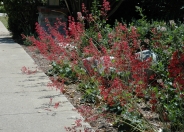
Common name: South Western Coral Bells
Botanical name: Heuchera sanguinea
Tufts of round leaves 2"-3" wide with scalloped edges accent this plant. It also produces wiry stems to 24" tall with open clusters of tiny, reddish pink, bell-shaped, fragrant flowers. Native to Desert Southwest so it tolerates desert heat, not humidity of deep South. It can also be grown in Colorado and Oregon in full sun with cool temperatures. This Heuchera typically spreads 12". Flowers can be used for vases. Prune spent flowers to encourage more blooming. This perennial has a mounding habit. In warmer and hot areas, plant in shade or part shade. This plant does best with well draining, fertile, moist soil. It does not tolerate clay soil well but will perform in rocky soil. Looks great in containers or along walkways.
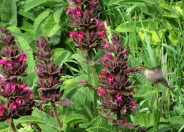
Common name: Hummingbird Sage
Botanical name: Salvia spathacea
The extravagant leaves of this small clumping sage emit a perfectly sweet fragrance, which attracts hummingbirds. In the spring, the reddish pink flowering spikes become a deep fuchsia color adding to its beauty. It is a great plant for dry shade and under oaks.
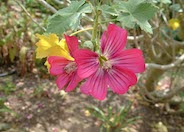
Common name: Island Tree Mallow
Botanical name: Lavatera assurgentiflora
This is a fast growing, evergreen, flowering shrub that works great as a foundation planting or windbreak. They require little maintenance other than occasional shearing to keep it dense. Other names: Malva Rose
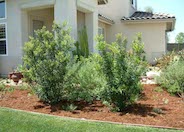
Common name: Pacific Wax Myrtle
Botanical name: Myrica californica
This large shrub/tree can reach 30' tall and has glossy, dark green leaves with purple nutlets that attract birds. It is used very effectively as a screen. Also known as Morella californica.
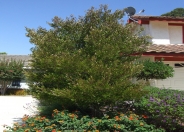
Common name: Green Hopseed Bush
Botanical name: Dodonaea viscosa
This small evergreen tree or shrub can quickly grow up to 12'-15' high and 12' wide. Leaf color can vary from green to purple. Though it is a shrub, it can pruned to resemble a tree by removing stems except for a central leader. It is drought tolerant. It prefers full sun although it will tolerate part shade and needs well draining soil. It is susceptible to Texas root rot. Yellow/green, small flowers appear in spring, followed by small papery, light brown seed pods that rustle with the slightest wind. Prune dead or damaged branches.